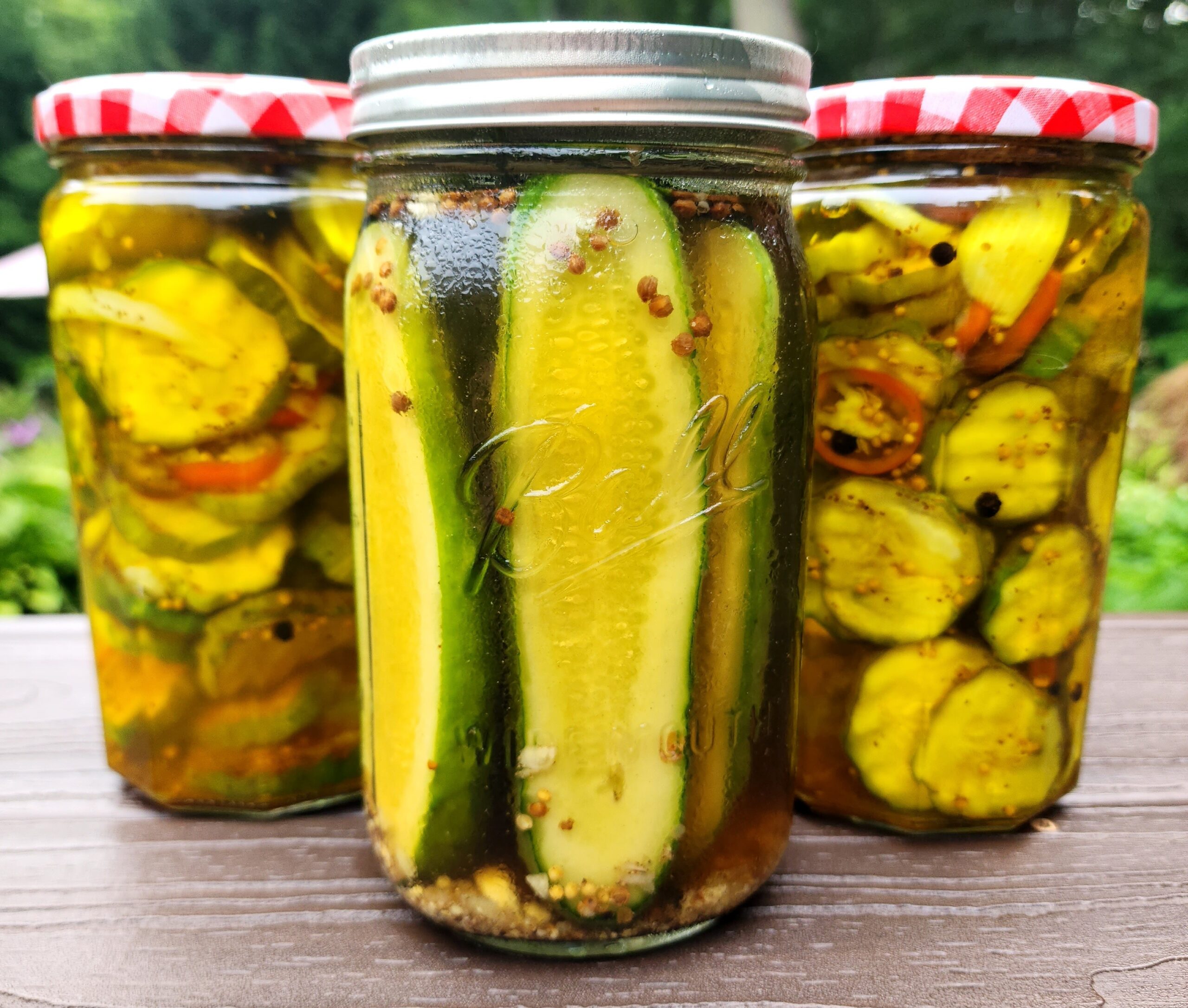By Nancy Vallarella
Fermented foods are all the rage for promoting gut health.
Most of the pickles found in the grocery store are not fermented. They are made using vinegar brine. Vinegar, combined with water, salt, and spices, creates a brine that preserves the vegetables and imparts a sharp, tangy flavor.
A traditional method that uses just water and salt is lacto-fermentation. Naturally occurring bacteria ferment the sugars in the vegetables, producing lactic acid which preserves the pickles. These pickles are prized for their probiotic benefits, promoting gut health.
The best part about making your own pickles is having full control over the ingredients. You can choose organic produce, customize the flavor with your favorite spices, and avoid any unwanted preservatives or artificial additives. The variety of cucumber you select is a critical decision when desiring a specific texture or needing time to produce a finished product.
When it comes to pickling, not all cucumbers are created equal. Two popular varieties often used are Baby/Persian cucumbers and Kirby cucumbers. Let’s explore the differences between these two types to help you choose the best one for your pickling needs.
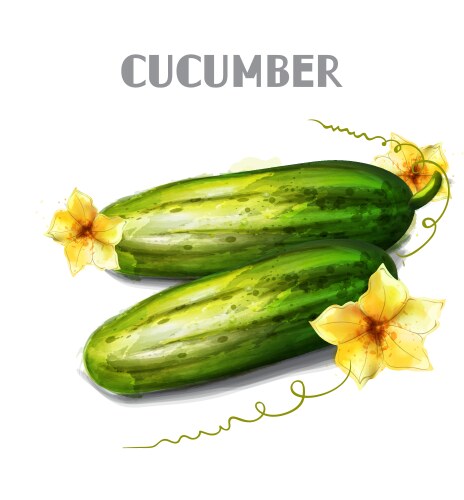
Baby/Persian Cucumbers
Baby or Persian cucumbers are small and slender, usually about 4-6 inches long. They have smooth, thin skin and are nearly seedless. They are known for their crisp, tender texture, which makes them ideal for fresh eating and quick pickling. Their thin skin means they don’t need to be peeled. These cucumbers have a mild, slightly sweet flavor, which is less bitter than some other varieties. Due to their size and texture, Baby/Persian cucumbers are great for salads, snacks, and quick pickles. They hold up well in vinegar brines and can be eaten fresh or lightly pickled.
Kirby Cucumbers
Kirby cucumbers are typically short and stout, about 3-6 inches long, with bumpy skin. They are thicker than Persian cucumbers and have a firm, crunchy texture that holds up well during pickling. Their thicker skin adds to their crispness and can be left on during pickling. Kirby cucumbers have a more robust, slightly bitter flavor, which mellows out during the pickling process. They are the quintessential pickling cucumbers, ideal for making dill pickles, bread and butter pickles, and kosher dills. They are versatile and can be used in both vinegar brines and lacto-fermentation.
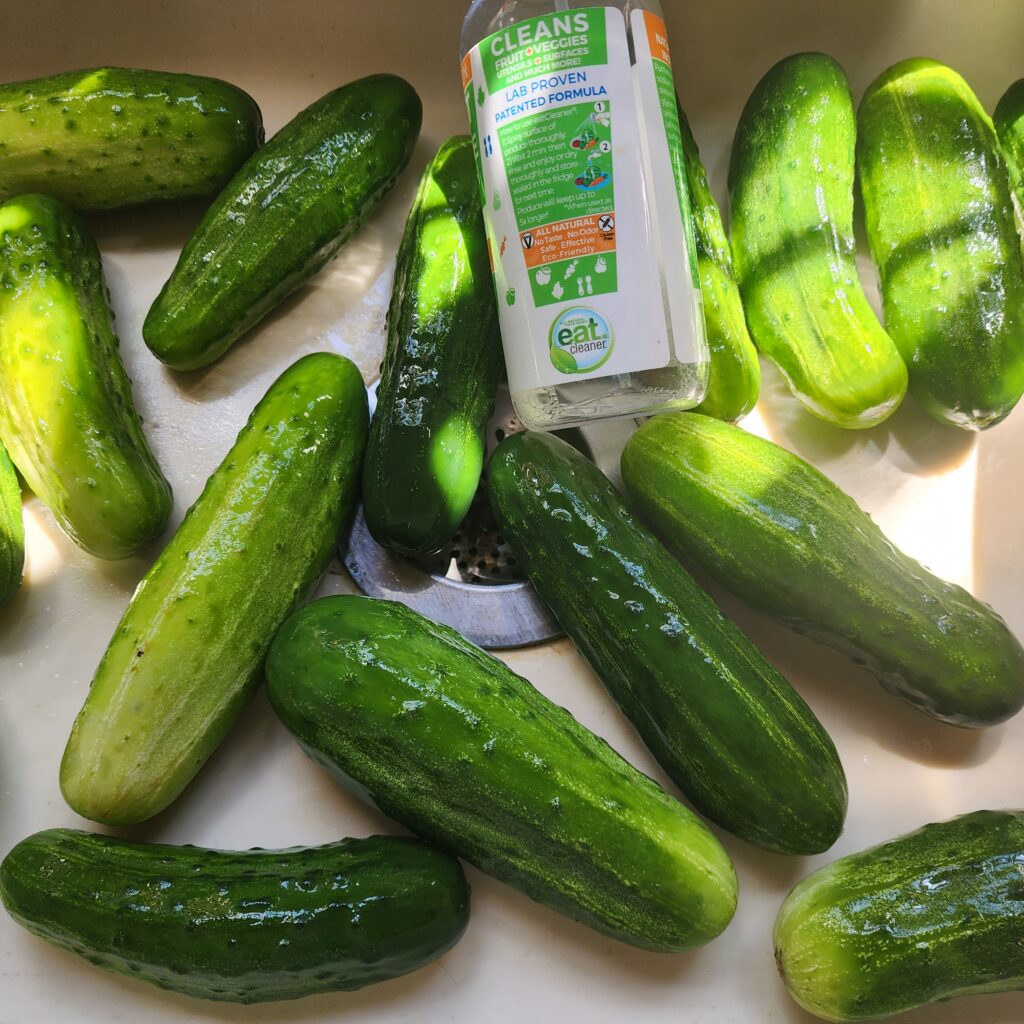
Choosing the Right Cucumber for Pickling
If you’re looking for a quick and easy pickle that can be enjoyed within a few days, Baby/Persian cucumbers are a smart choice. Their thin skin and mild flavor make them perfect for this method. For more traditional pickling methods, especially those requiring longer fermentation or canning, Kirby cucumbers are the way to go. Their firm texture and thicker skin help them stay crunchy throughout the process. Both varieties bring something unique to the table, so your choice will depend on the type of pickles you want to make and your personal preferences.
Supermarkets are flush with Baby/Persian cucumbers. Kirby pickles are harder to find. One local supermarket manager said their producers are having a mold issue this season.
I found Kirby cucumbers at the Huntington Village Farmers’ Market this past Sunday. Vendor Happy Now Farms is there every other Sunday. Fink’s Farm in Wading River has advertised having them. Thera Farms in Brentwood reported their first harvest will be ready this weekend!
Whether you opt for the tender Baby/Persian cucumbers or the robust Kirby cucumbers, you’re sure to enjoy delicious, homemade pickles!
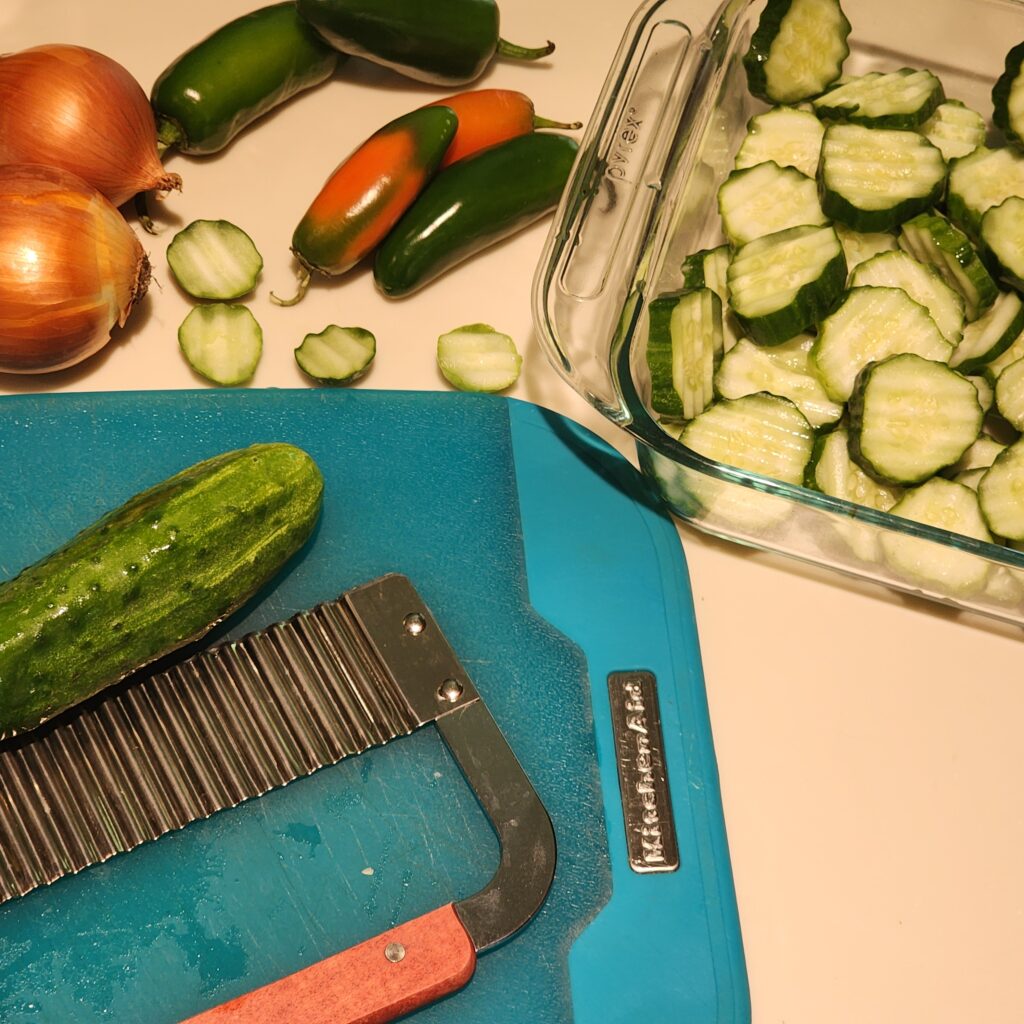
Bread & Butter Pickles
Ingredients – Makes 1 quart
• 1 pound pickling cucumbers, sliced
(Kirby or Persian)
• 1/4 yellow onion, sliced
• 1 red jalapeno or fresno
pepper, thinly sliced into rings
• 1 ½ Tbs. kosher salt
• 1 cup distilled white vinegar
• 1 cup white sugar
• 1/8 cup water
• 1 cloves garlic, smashed
• 1½ tsp. mustard seed
• ½ tsp. celery seeds
• ½ tsp. whole black
peppercorns
• ¼ tsp ground turmeric
• pinch of ground cloves
Directions
Combine cucumbers, onion, and peppers in a bowl; pour kosher salt over the top and stir to coat completely. Cover the bowl with plastic wrap and refrigerate, stirring occasionally, 2 to 4 hours. Rinse cucumber mixture in a colander under cold water until all salt is washed away, 3 to 4 minutes. Drain.
Stir vinegar, sugar, water, garlic, mustard seed, celery seed, peppercorns, turmeric, and ground cloves together in a saucepan; bring to a simmer and cook until brine flavors combine, about 2 minutes. Add cucumber mixture to brine; heat until almost boiling, remove from heat, and cool completely. Transfer to jars and store in the refrigerator.
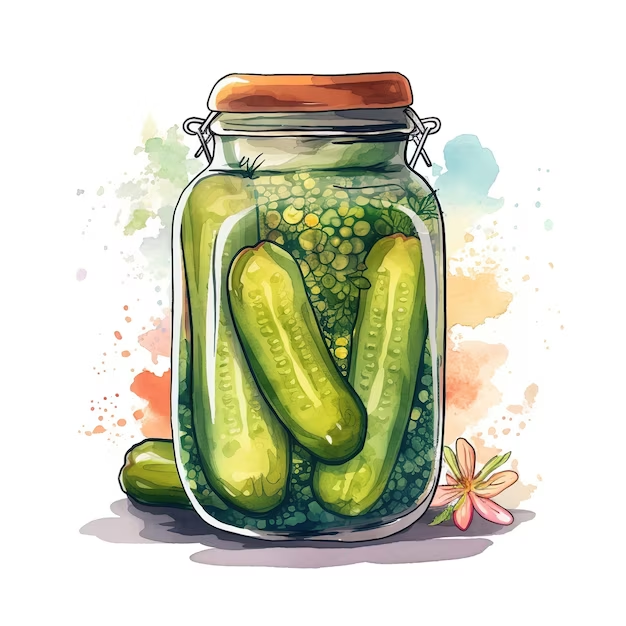
Half Sour Pickles – from Brooklyn Farm Girl
Ingredients – Makes 1 quart
• 5 Kirby cucumbers or how many fit in the jar
• 1/2 teaspoon coriander seeds
• 1/2 teaspoon mustard seeds
• 1/2 teaspoon black peppercorns
• a few pieces of fresh dill
• 3 bay leaves
• 6 cloves garlic minced
• 1/4 cup sea salt
• 6 cups water
Directions
Wash your cucumbers. Dissolve your sea salt in the water. Grind up all the dry ingredients (coriander, mustard seeds, peppercorns, 2 bay leaves). If you don’t have a mortar/pestle, throw it in a plastic bag and use a rolling pin to crush them.
Put the cucumbers in your jar. Put the minced garlic in the jar, then ground up spices, then pour the saltwater mixture on top. If you have any water left, disregard it. Add a few pieces of fresh dill on top. Add in your additional coriander seeds, peppercorns, and bay leaf.
Make sure your cucumbers are completely covered in water and close the jar. Put it in the refrigerator. Let them sit for at least 4 days before eating.
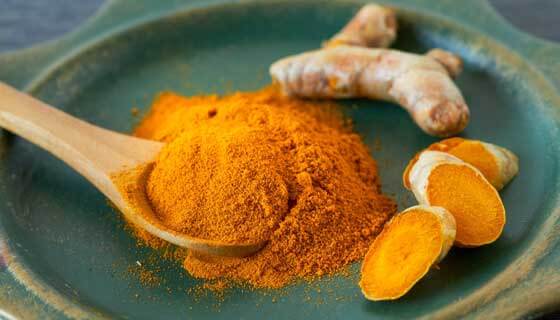
Fun Fact – Do you know where pickles get their chartreuse coloring? Turmeric!



